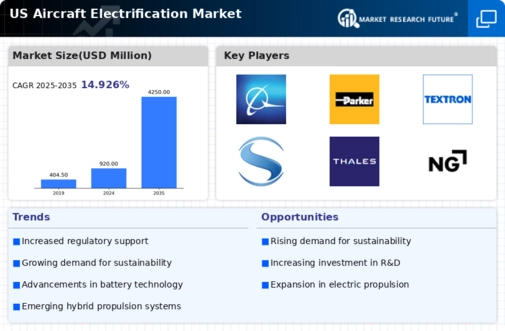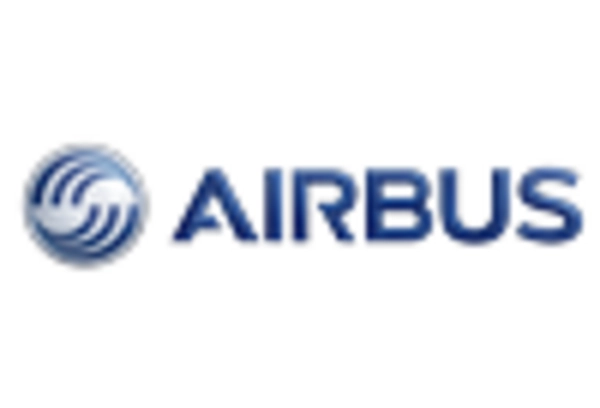Rising Fuel Costs and Economic Pressures
The aircraft electrification market is being propelled by rising fuel costs and economic pressures faced by airlines. Fluctuations in fossil fuel prices have made traditional aviation fuel increasingly expensive, prompting airlines to seek alternative solutions. Electric propulsion systems offer a promising avenue for reducing operational costs, as electricity is generally more affordable than jet fuel. In fact, studies indicate that electric aircraft could reduce fuel costs by up to 70%, making them an attractive option for airlines looking to improve their bottom line. Additionally, the economic pressures stemming from competition and the need for profitability are pushing airlines to adopt more efficient technologies. As a result, the aircraft electrification market is likely to expand as airlines invest in electric aircraft to mitigate fuel-related expenses and enhance their competitive edge.
Technological Advancements in Battery Systems
The aircraft electrification market is experiencing a surge in technological advancements, particularly in battery systems. Innovations in lithium-ion and solid-state batteries are enhancing energy density and reducing weight, which are critical for aircraft performance. For instance, the energy density of advanced batteries has improved by approximately 30% over the past few years, enabling longer flight ranges and reduced charging times. This progress is pivotal for the aircraft electrification market, as it directly influences the feasibility of electric propulsion systems. Furthermore, the development of fast-charging technologies is expected to facilitate quicker turnaround times at airports, making electric aircraft more viable for commercial operations. As these technologies mature, they are likely to attract further investment and interest from manufacturers and airlines, thereby propelling the growth of the aircraft electrification market in the US.
Consumer Demand for Sustainable Travel Options
The aircraft electrification market is increasingly shaped by consumer demand for sustainable travel options. Passengers are becoming more environmentally conscious, seeking airlines that prioritize sustainability in their operations. Surveys indicate that over 60% of travelers are willing to pay a premium for flights operated by electric or hybrid aircraft. This shift in consumer preferences is prompting airlines to invest in electrification technologies to attract eco-conscious customers. Furthermore, airlines are recognizing that promoting their commitment to sustainability can enhance brand loyalty and market share. As a result, the aircraft electrification market is likely to benefit from this growing consumer trend, with airlines actively pursuing electric aircraft to align with customer expectations and improve their environmental footprint.
Government Incentives and Funding Opportunities
The aircraft electrification market is bolstered by various government incentives and funding opportunities aimed at promoting electric aviation technologies. Federal programs, such as the Sustainable Aviation Fuel Grand Challenge, are designed to support research and development in electrification. Additionally, grants and subsidies are available for companies developing electric aircraft and related technologies. These financial incentives are crucial for reducing the high upfront costs associated with electrification projects. As a result, the aircraft electrification market is likely to see increased participation from startups and established manufacturers alike, fostering innovation and accelerating the development of electric aircraft. The availability of government support is expected to play a pivotal role in shaping the future landscape of the aircraft electrification market.
Environmental Regulations and Emission Standards
The aircraft electrification market is significantly influenced by stringent environmental regulations and emission standards imposed by federal agencies. The US government has set ambitious targets to reduce greenhouse gas emissions from aviation, aiming for a 50% reduction by 2050 compared to 2005 levels. These regulations are driving airlines and manufacturers to explore electrification as a viable solution to meet compliance. The Federal Aviation Administration (FAA) and the Environmental Protection Agency (EPA) are actively promoting research and development in electric propulsion technologies. As a result, the aircraft electrification market is likely to see increased investments in cleaner technologies, with a projected growth rate of around 15% annually over the next decade. This regulatory landscape is fostering innovation and collaboration among stakeholders, further enhancing the market's potential.

















Leave a Comment